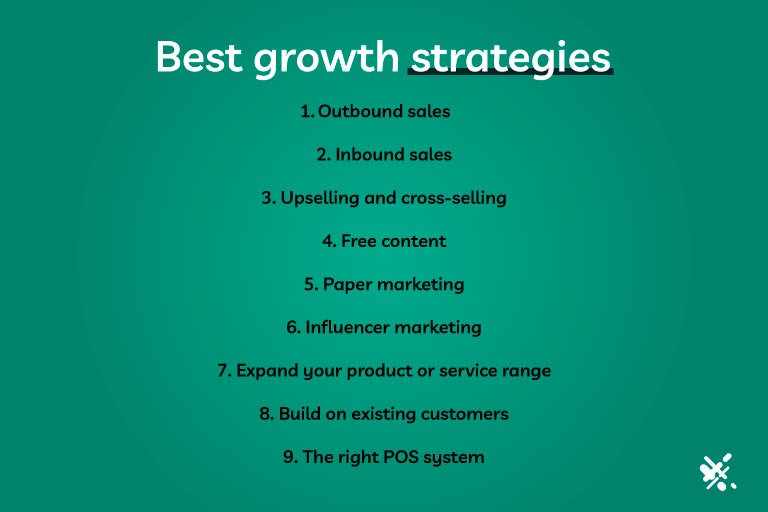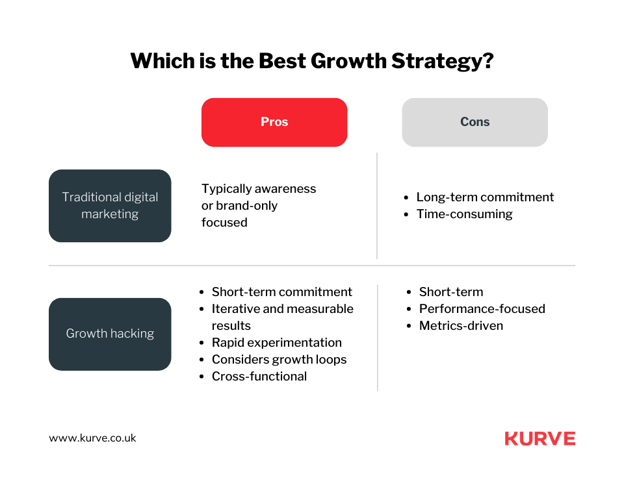Best growth strategies include diversifying your product line and expanding into new markets. Focus on customer retention and leveraging technology for efficiency.
Growth strategies are crucial for businesses aiming to scale and succeed in competitive markets. Diversifying your product line helps attract a broader audience and mitigates risks. Expanding into new markets increases your customer base and revenue potential. Retaining existing customers ensures a steady income stream and boosts brand loyalty.
Leveraging technology enhances operational efficiency, enabling better decision-making and resource management. Combining these strategies creates a robust foundation for sustainable growth. Businesses need to continuously adapt and innovate to stay ahead in the market. Effective growth strategies drive long-term success and profitability.
Market Penetration
Market penetration is a growth strategy aimed at increasing the market share. It involves selling more of your current products to your existing market. This strategy is crucial for businesses wanting to grow without developing new products.
Existing Customers
Focusing on existing customers is a cost-effective way to grow. These customers already trust your brand. Leveraging this trust can increase your sales.
- Offer special discounts
- Launch loyalty programs
- Introduce referral bonuses
Here is a table showing the impact of these strategies:
| Strategy | Potential Impact |
|---|---|
| Special Discounts | Boosts short-term sales |
| Loyalty Programs | Increases customer retention |
| Referral Bonuses | Attracts new customers |
Competitor Analysis
Conducting a competitor analysis helps identify opportunities for growth. Knowing what competitors do can highlight gaps in your strategy.
Steps for an effective analysis:
- Identify your main competitors
- Analyze their strengths and weaknesses
- Compare their product offerings with yours
Consider these key factors:
- Pricing strategies
- Marketing tactics
- Customer service quality
This information can guide your market penetration efforts. It helps you to improve your products and services.

Credit: userpilot.com
Product Development
Product development is key to business growth. It involves creating new products or improving existing ones. This strategy can help your business stay competitive and meet customer needs.
Innovation
Innovation drives product development. New ideas lead to better products. Use brainstorming sessions to generate ideas. Encourage your team to think outside the box. Create a culture of creativity. Reward innovative solutions. Keep an eye on market trends. Understand what customers want. Use new technologies to improve products.
Customer Feedback
Customer feedback is crucial for product development. It helps you understand what works and what doesn’t. Create surveys to gather feedback. Listen to customer complaints. Use focus groups to test new ideas. Analyze feedback and make necessary changes. This ensures your product meets customer expectations.
| Method | Benefit |
|---|---|
| Surveys | Gather broad customer insights |
| Focus Groups | In-depth feedback on new ideas |
| Customer Complaints | Identify areas for improvement |
Utilize these methods to refine your products. Keeping a close connection with customers ensures your product evolves with their needs.
Market Expansion
Market expansion is a smart growth strategy. It involves reaching out to new markets. This can be done by expanding geographically or targeting new demographics.
Geographic Growth
Geographic growth means expanding to new locations. This can be a new city, state, or country. It helps to increase your customer base. Below are key steps for effective geographic expansion:
- Research the new market: Understand the local demand and competition.
- Adapt your product: Customize your offerings to fit local preferences.
- Legal compliance: Ensure you follow local laws and regulations.
- Build local partnerships: Collaborate with local businesses to gain trust.
Geographic growth can open up new revenue streams. It can also reduce reliance on a single market.
New Demographics
Targeting new demographics means reaching new customer groups. These groups can be based on age, gender, income, or lifestyle. Here are some ways to approach new demographics:
- Conduct market research: Identify the needs and preferences of new groups.
- Segment your audience: Create specific marketing strategies for each group.
- Tailor your messaging: Use language and visuals that appeal to each demographic.
- Utilize diverse channels: Reach out through various platforms like social media, email, and in-person events.
Reaching new demographics can diversify your customer base. It can also enhance brand loyalty and increase sales.

Credit: terakeet.com
Diversification
Diversification is a powerful growth strategy. It helps businesses spread risks and seize new opportunities. By diversifying, companies can enter new markets, offer new products, and reach more customers.
Product Diversification
Product diversification involves adding new products to your existing range. This can attract different customer segments. By offering more options, you can meet varied needs.
- Horizontal Diversification: Introduce products similar to your current line.
- Vertical Diversification: Add products at different stages of the supply chain.
- Concentric Diversification: New products that are technically related.
Product diversification can reduce dependency on a single product. It helps in tapping into new revenue streams.
Service Expansion
Service expansion means offering new services to your customers. This can make your business more attractive.
Here are some methods:
- Complementary Services: Add services that complement your existing products.
- New Market Services: Enter new markets with unique services.
- Technology-Based Services: Use technology to offer advanced services.
Service expansion can enhance customer satisfaction. It can also increase customer loyalty.
| Type | Description |
|---|---|
| Horizontal Diversification | Adding similar products to the current line. |
| Vertical Diversification | Adding products at different supply chain stages. |
| Concentric Diversification | Adding technically related new products. |
| Complementary Services | Adding services that complement existing products. |
| New Market Services | Offering unique services in new markets. |
| Technology-Based Services | Using technology to offer advanced services. |
Strategic Partnerships
Strategic partnerships can be powerful tools for business growth. They involve collaboration between companies to achieve common goals. These partnerships can take many forms and offer various benefits. Below, we’ll explore two key types: joint ventures and alliances.
Joint Ventures
Joint ventures occur when two or more companies create a new entity. This new entity aims to tackle shared objectives. Benefits include:
- Shared Resources: Pooling resources like capital, technology, and expertise.
- Risk Mitigation: Distributing risks among partners reduces individual exposure.
- Market Access: Gaining entry to new markets and customer segments.
For example, Company A and Company B might form a joint venture. They could create a new product that neither could develop alone. This partnership allows them to leverage each other’s strengths.
Alliances
Alliances are less formal than joint ventures. They involve collaboration without creating a new entity. Benefits include:
- Flexibility: Easier to form and dissolve as needed.
- Cost Efficiency: Lower costs compared to forming a new company.
- Complementary Skills: Partners can benefit from each other’s expertise.
For instance, a tech company might form an alliance with a marketing firm. The tech company focuses on innovation. The marketing firm handles promotions. This allows both to focus on their core strengths while achieving common goals.
| Strategic Partnership Type | Benefits |
|---|---|
| Joint Ventures |
|
| Alliances |
|

Credit: www.ecspayments.com
Digital Marketing
In today’s fast-paced world, Digital Marketing is crucial for growth. It helps businesses reach a broader audience. Effective digital marketing strategies can boost your brand awareness and sales.
Seo
SEO stands for Search Engine Optimization. It improves your website’s visibility on search engines like Google. Higher visibility means more traffic to your site. Here are some key elements of SEO:
- Keywords: Use relevant keywords in your content.
- Meta Tags: Include meta titles and descriptions.
- Backlinks: Get links from other reputable websites.
- Mobile Optimization: Ensure your site is mobile-friendly.
Focus on these elements to improve your SEO. Better SEO leads to more organic traffic and higher conversions.
Social Media
Social Media platforms are essential for digital marketing. They help you engage with your audience directly. Here are some key strategies for social media marketing:
- Content Creation: Post engaging and relevant content.
- Consistency: Maintain a regular posting schedule.
- Interaction: Respond to comments and messages promptly.
- Analytics: Track your performance and adjust strategies.
Using these strategies can increase your brand’s visibility and engagement. Social media helps build a loyal customer base.
Customer Retention
Customer retention is crucial for business growth. Keeping existing customers costs less than acquiring new ones. Loyal customers also tend to spend more over time. Implementing effective retention strategies can boost your revenue significantly.
Loyalty Programs
Loyalty programs encourage customers to return. Offer rewards for repeat purchases. These rewards can be discounts, free products, or special access. Make sure the rewards are valuable to your customers.
Here are some ideas for loyalty program rewards:
- Discounts on future purchases
- Exclusive access to new products
- Free samples or gifts
Track customer purchases and reward them accordingly. Use a simple points system. Make it easy for customers to understand and use.
Customer Service
Excellent customer service is key to retention. Solve customer problems quickly. Be polite and friendly in all interactions.
Consider these tips for improving customer service:
| Tip | Description |
|---|---|
| Listen Actively | Understand the customer’s issue fully before responding. |
| Be Responsive | Answer questions and resolve issues promptly. |
| Follow Up | Check in to ensure the problem is resolved. |
Train your team to handle complaints effectively. Use customer feedback to improve your services. Happy customers are more likely to stay loyal.
Performance Metrics
Performance Metrics are essential for tracking the success of your growth strategies. They help you measure progress, identify areas for improvement, and ensure your efforts align with your business goals. Understanding these metrics can make a significant difference in achieving sustainable growth.
Kpis
Key Performance Indicators (KPIs) are quantifiable measures that gauge how well your business is performing. Choosing the right KPIs is crucial. They should be relevant to your objectives and provide insights into your business’s health.
- Revenue Growth Rate: Tracks the increase in revenue over a period.
- Customer Acquisition Cost (CAC): Measures the cost to acquire a new customer.
- Customer Lifetime Value (CLV): Estimates the total revenue from a customer over their lifetime.
- Conversion Rate: The percentage of visitors who complete a desired action.
| KPI | Formula | Importance |
|---|---|---|
| Revenue Growth Rate | (Current Revenue – Previous Revenue) / Previous Revenue | High |
| CAC | Total Cost of Sales and Marketing / Number of New Customers | Medium |
| CLV | Average Purchase Value x Purchase Frequency x Customer Lifespan | High |
| Conversion Rate | (Number of Conversions / Total Visitors) x 100 | High |
Data Analytics
Data Analytics involves examining raw data to draw meaningful conclusions. It helps you understand patterns, trends, and insights that can drive your growth strategy.
- Collect Data: Use tools like Google Analytics to gather data.
- Analyze Data: Look for trends, patterns, and anomalies.
- Interpret Results: Convert data into actionable insights.
- Implement Changes: Use insights to adjust your strategies.
Effective Data Analytics can reveal hidden opportunities. It helps optimize your marketing campaigns, improve customer experience, and increase profitability.
Frequently Asked Questions
What Are Effective Growth Strategies?
Effective growth strategies include market penetration, product development, market expansion, and diversification. These approaches help businesses increase revenue, customer base, and market share.
How Can I Identify Growth Opportunities?
Identify growth opportunities by analyzing market trends, customer needs, and competitor weaknesses. Conduct thorough market research to find gaps and potential areas for expansion.
Why Is Customer Feedback Important For Growth?
Customer feedback provides insights into customer needs and preferences. It helps improve products, services, and customer satisfaction, which are crucial for growth.
How Does Market Penetration Work?
Market penetration involves increasing sales of existing products in current markets. This can be achieved through competitive pricing, marketing campaigns, and improving product quality.
Conclusion
Effective growth strategies are crucial for any business aiming to succeed. Implement these tactics to see remarkable progress. Stay adaptable, monitor results, and refine your approach. Your commitment to these strategies will drive sustained growth. Stay focused, persistent, and watch your business thrive.
Remember, consistent effort leads to lasting success.
